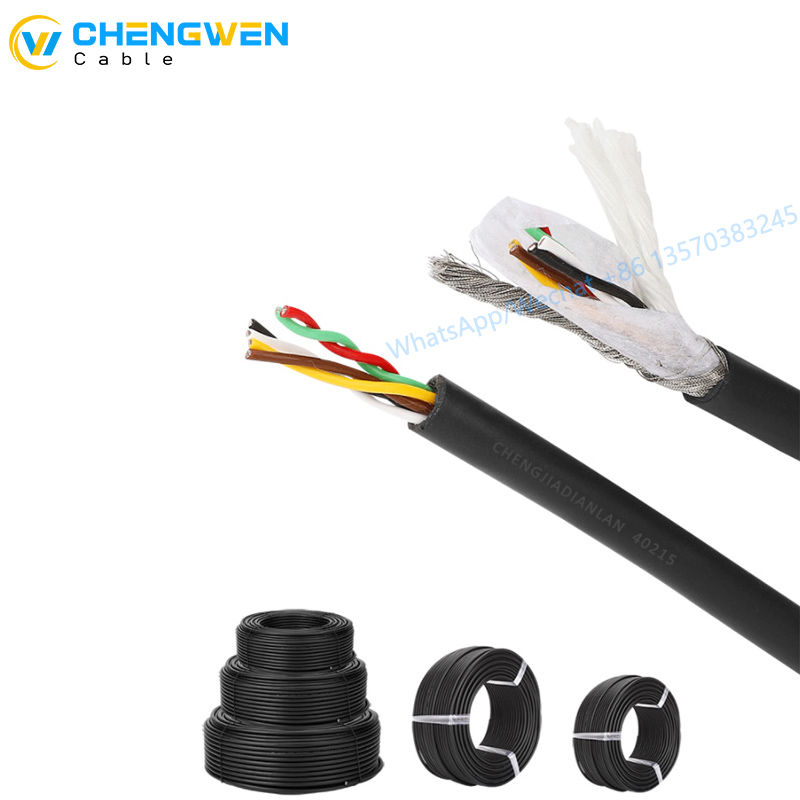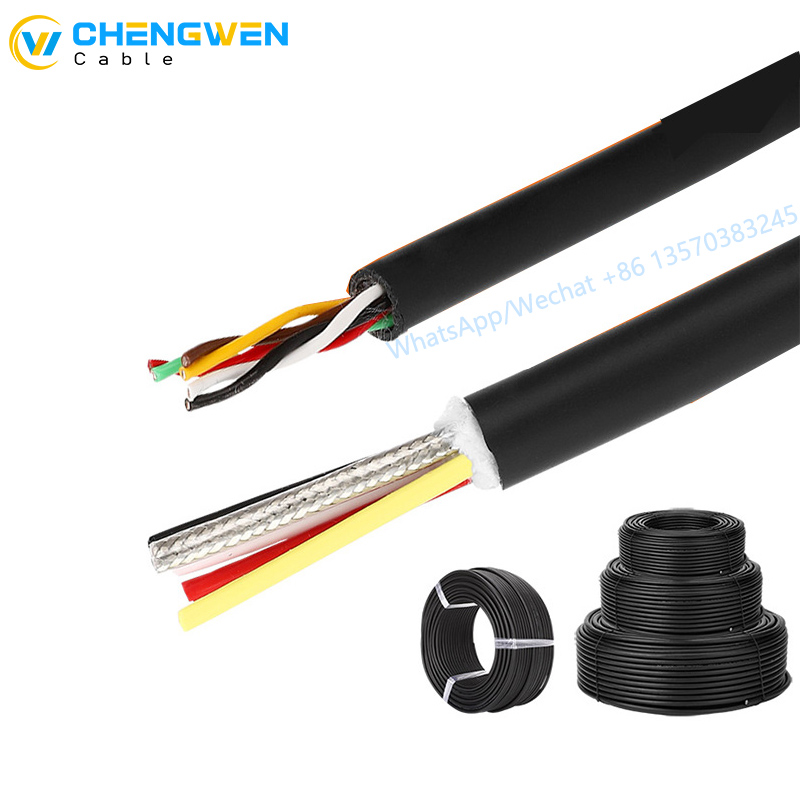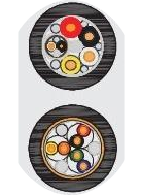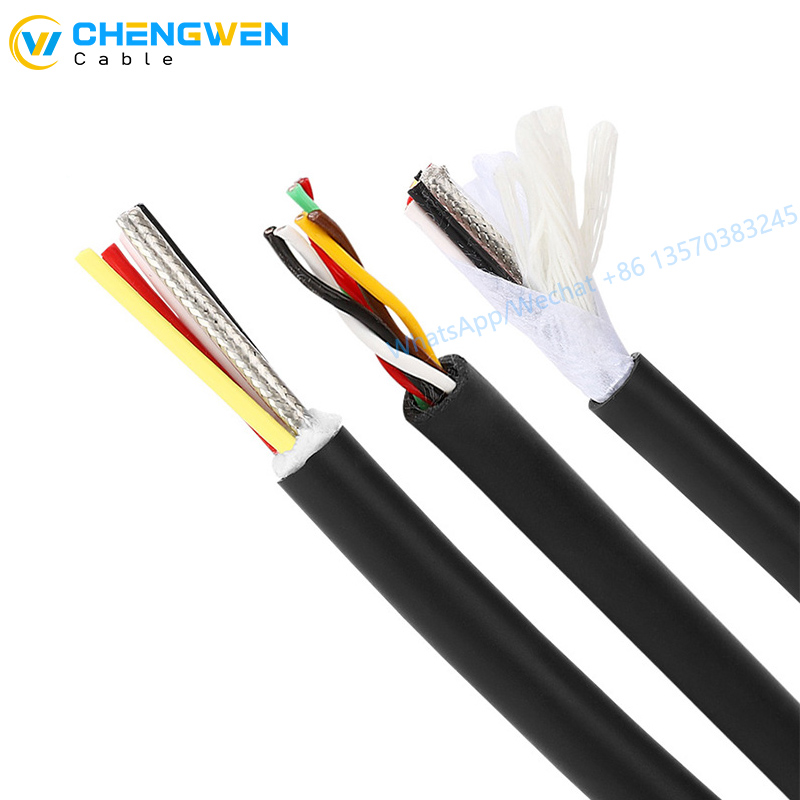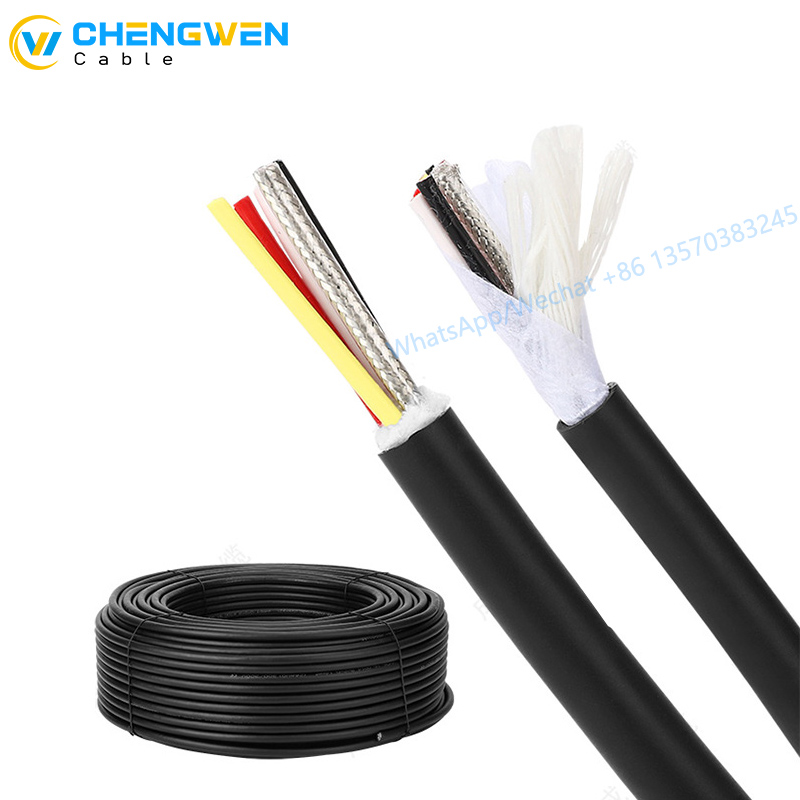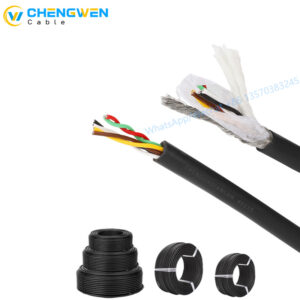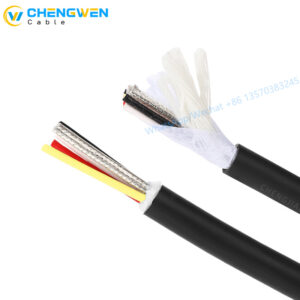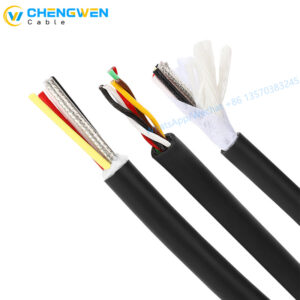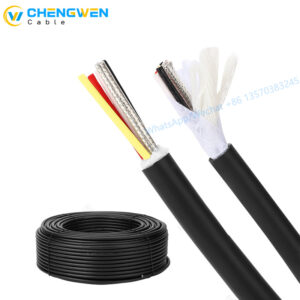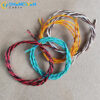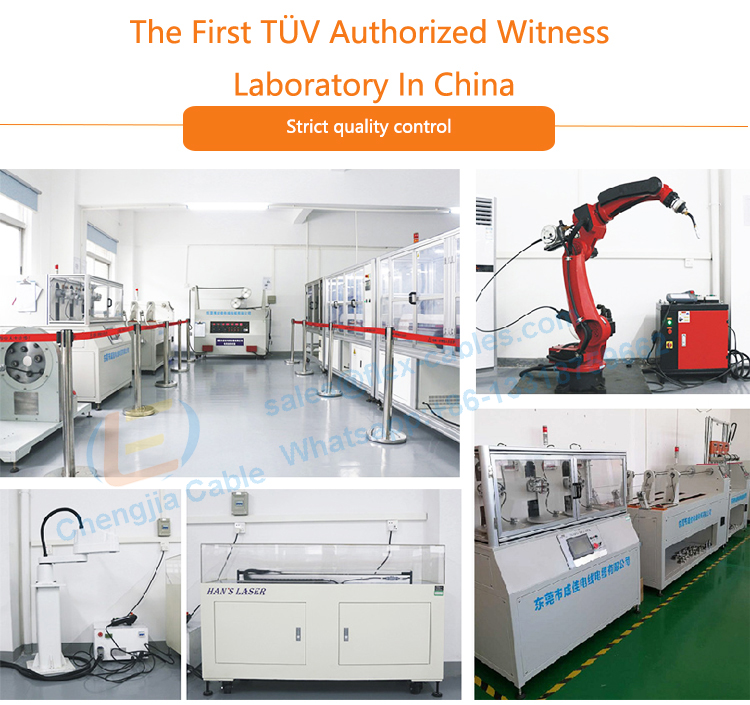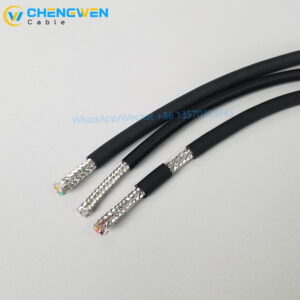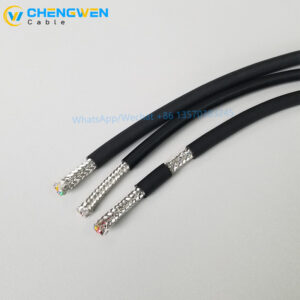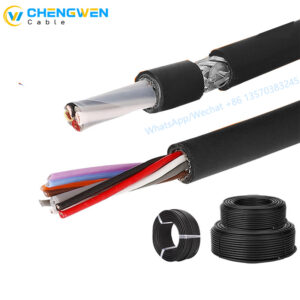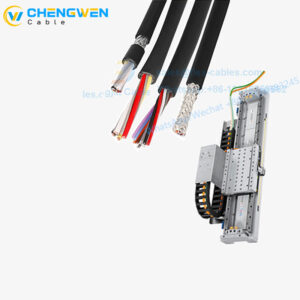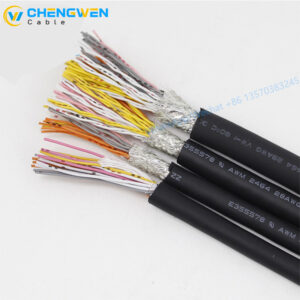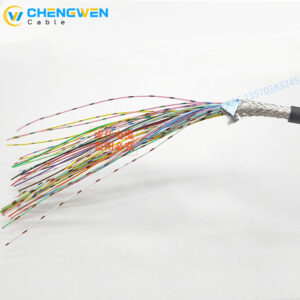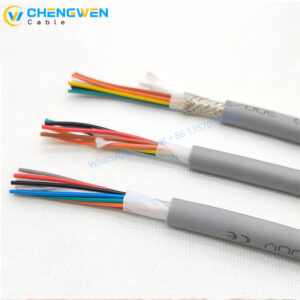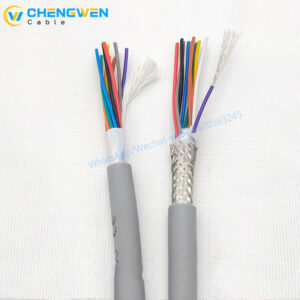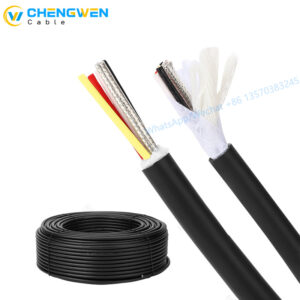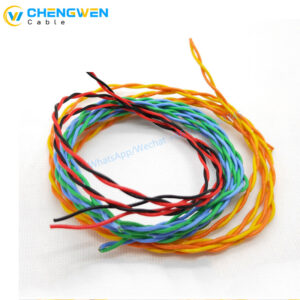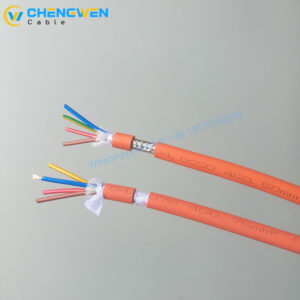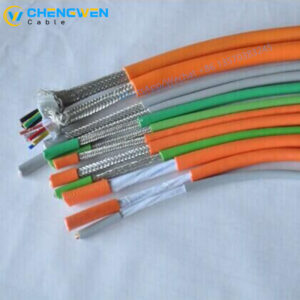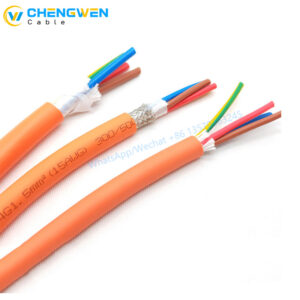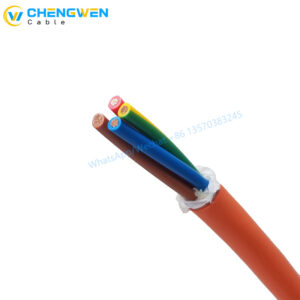ロボットフレキシブルケーブル産業用PUR TPU電源ケーブル
このタイプのケーブルは、産業用ロボットやその他の機械などの複雑な環境での長期的なねじれ、曲げ、および高強度アプリケーションに特に適しています。曲げとねじれによる継続的で高強度の機械的ストレスに耐えることができ、ロボット製品の信頼性と延長寿命を確保することが優れた選択肢となります。
技術的パラメータ
●特別なフルオロレージン断熱、超高強度と曲げ、ねじれパフォーマンスを備えた特別なPVCシース
●TUV 2 PFG 2577クラスV要件に準拠しています
●温度範囲:モバイルインストール-20°C〜 +80°C固定インストール-40°C〜 +105°C
●電源300/500 Vの公称電圧UO/U、データUO/U 300/300 V
●電源2000 V、データ1500Vのテスト電圧
●絶縁抵抗:最低100 Mohm XKM
●最小曲げ半径:モバイルインストール6倍ケーブル直径固定インストール4xケーブル直径
●EU ROHSに準拠し、規制に到達します
構造
●ティンメッキの銅(0.5mm2未満)または裸の銅(0.5mm2以上)の導体、DIN VDE 0295クラス6およびIEC 60228クラス6に準拠した超洗浄銅線、
●特別なフルオロレージン断熱
●コアワイヤカラーコーディング
●コアの最適なピッチツイスト
●缶詰の銅線編組シールドを改善しました
●85%の最低補償率
●特別なPVCアウターシース
●ブラック(RAL9005)マット仕上げ
| 産業用ロボット電源ケーブル(ドラッグチェーンの5,000万回の信頼性テスト) | ||||
| いいえ。 | 製品コード | コア数と断面積 | おおよその外径(mm) | 外被シース色 |
| (NO.Xm㎡) | ||||
| 1 | RO-FY5002.06.2024 | 4×0.5+(2×0.2) | 7.0 | 黒 |
| 2 | RO-FY5002.06.1922 | 24×0.75+(2×0.3) | 8.0 | 黒 |
| 3 | RO-FY5002.06.1522 | 4×1.5+(2×0.3) | 9.2 | 黒 |
| 産業用ロボットデータケーブル(ドラッグチェーンの5,000万回の信頼性テスト) | ||||
| いいえ。 | 製品コード | コア数と断面積 | おおよその外径(mm) | 外被シース色 |
| (NO.Xm㎡) | ||||
| 1 | RO-FY5006.06.0020 | 3x2x0.2 | 5.5 | 黒 |
| 2 | RO-FY5006.16.0020 | 8x2x0.2 | 8.6 | 黒 |
| 3 | RO-FY5006.06.0030 | 3x2x0.3 | 6.2 | 黒 |
要件に応じた特別なモデルのカスタマイズが利用可能です。さまざまな導体断面積、材料、シールド、色、鞘のその他の仕様を備えたケーブルなどです。
2.2Dねじりテスト
テスト方法:2.5メートルの仕上げケーブルを取り、距離を1メートルで固定し、指定された重量を適用し、角度を正と負の90度または180度で回転させ、毎分60サイクルの速度でねじれを実行します。
判断基準:1。5,000,000サイクルの前後の動きを超えた後の開回路または短絡はありません。 2.鞘のひび割れはありません。
3.3Dねじりテスト
テスト方法:1メートルの仕上げケーブルを取り、標準要件に応じて距離を修正します。上部は正と負の90度で曲がっていますが、ベースは正と負の180度で回転します。毎分30サイクルの速度で曲げとねじれを実行する
判断基準:1。5,000,000サイクルの前後の動きを超えた後の開回路または短絡はありません。 2.鞘のひび割れはありません。
4.二輪曲げテスト
テスト方法:5メートルの仕上げケーブルを取り、指定されたプーリーの直径と重量に応じて、少なくとも1.0メートルの移動距離で速度0.33メートルの速度でプーリーを前後に動かします。判断基準:
判断基準:1。1,000,000サイクルの前後の動きを超えた後の開回路または短絡はありません。 2.鞘のひび割れはありません。
5.90度ベンドテスト
テスト方法:ケーブル直径の2.5倍の曲げ半径を持つ2メートルの仕上げケーブルを取り、標準で指定された重量を適用し、毎分40サイクルの速度で曲げを実行します。
判断基準:1。1,000,000サイクルの前後の動きを超えた後の開回路または短絡はありません。 2.鞘のひび割れはありません。
6.増加および回転テスト
テスト方法:1.5メートルの仕上げケーブルを使用し、距離を300mmで固定し、曲げ半径は150mmで、1分あたり50回転の速度で回転します。
判断基準は、50,000サイクルの往復運動を超えた後の開回路または短絡なし。鞘にひびが入りません。

